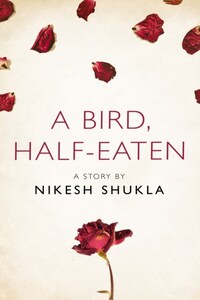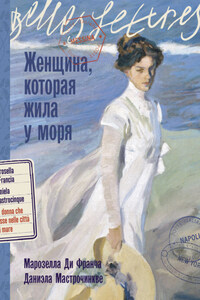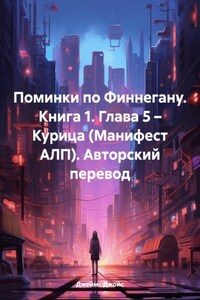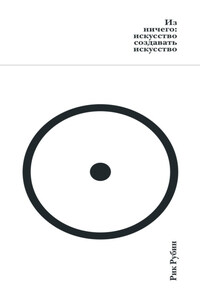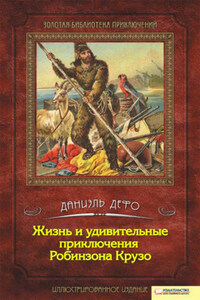A Bird, Half-Eaten
by Nikesh Shukla
A short story from the collection
Published by The Borough Press
an imprint of HarperCollinsPublishers Ltd
1 London Bridge Street
London SE1 9GF
www.harpercollins.co.uk
First published in Great Britain by HarperCollinsPublishers 2018
In the compilation and introductory material © Kate Mosse 2018
A Bird, Half-Eaten © Nikesh Shukla 2018
The moral rights of the author have been asserted
Cover design by Holly Macdonald © HarperCollinsPublishers Ltd 2018
Cover photographs © Sally Mundy/Trevillion Images, © Shutterstock.com petals
A catalogue copy of this book is available from the British Library.
This story is entirely a work of fiction. The names, characters and incidents portrayed in it, while at times based on historical events and figures, are the works of the author’s imagination.
All rights reserved under International and Pan-American Copyright Conventions. By payment of the required fees, you have been granted the non-exclusive, non-transferable right to access and read the text of this e-book on screen. No part of this text may be reproduced, transmitted, down-loaded, decompiled, reverse engineered, or stored in or introduced into any information storage and retrieval system, in any form or by any means, whether electronic or mechanical, now known or hereinafter invented, without the express written permission of HarperCollins.
Source ISBN: 9780008257439
Ebook Edition © August 2018 ISBN: 9780008303150
Version: 2018-07-17
Contents
Cover
Title Page
Copyright
Foreword by Kate Mosse
A Bird, Half-Eaten
Note on the Author
A Note on Emily Brontë
About the Publisher
SO, WHAT MAKES Wuthering Heights – published the year before Emily Brontë’s own death – the powerful, enduring, exceptional novel it is? Is it a matter of character and sense of place? Depth of emotion or the beauty of her language? Epic and Gothic? Yes, but also because it is ambitious and uncompromising. Like many others, I have gone back to it in each decade of my life and found it subtly different each time. In my teens, I was swept away by the promise of a love story, though the anger and the violence and the pain were troubling to me. In my twenties, it was the history and the snapshot of social expectations that interested me. In my thirties, when I was starting to write fiction myself, I was gripped by the architecture of the novel – two narrators, two distinct periods of history and storytelling, the complicated switching of voice. In my forties, it was the colour and the texture, the Gothic spirit of place, the characterisation of Nature itself as sentient, violent, to be feared. Now, in my fifties, as well as all this, it is also the understanding of how utterly EB changed the rules of what was acceptable for a woman to write, and how we are all in her debt. This is monumental work, not domestic. This is about the nature of life, love, and the universe, not the details of how women and men live their lives. And Wuthering Heights is exceptional amongst the novels of the period for the absence of any explicit condemnation of Heathcliff’s conduct, or any suggestion that evil might bring its own punishment.
This collection is published to celebrate the bicentenary of Emily Brontë’s birth in 1818. What each story has in common is that, despite their shared moment of inspiration, they are themselves, and their quality stands testament both to our contemporary writers’ skills, and the timelessness of Wuthering Heights. For, though mores and expectations and opportunities alter, wherever we live and whoever we are, the human heart does not change very much. We understand love and hate, jealousy and peace, grief and injustice, because we experience these things too – as writers, as readers, as our individual selves.
I LOOP THE WRAP over my thumb and across the back of my hand. It goes over my hand three times, tight, and then around my wrist, three times, tight. There’s a ritual to this. I bring the wrap up from my wrist in between my little and ring finger and then back down to my wrist. Up again, between ring and middle, and back down. Up again, between middle and index, and then back down. Each time, the wrap forms an X across the back of my hand. I loop it between thumb and index and then across the palm of my hand, to lock it in. I wrap the remainder of the cloth around my wrist and then Velcro it closed. I flex my hand, open and closed. It feels tight, taut, tethered.
I repeat the ritual with my weaker hand. This one always feels looser. I love watching people perform this ritual quietly, meditatively, with ease, in changing rooms and on YouTube videos. I look at my own fingers, shuddering slightly under the wrap, and clench my fist.
When I have wrapped both my hands, I pick up my gloves and take three shallow sips of water, heading to the thin sweaty alcove of heavy bags. I’m the only one in here. I come when it’s quiet so I can concentrate.
When the bell rings, I hold my fists up over my face and I drop my chin. I am hunched, and standing with my feet a shoulder apart.
